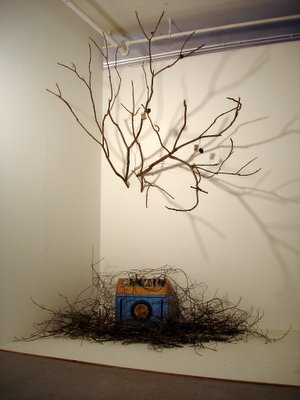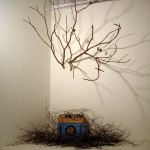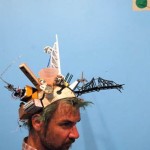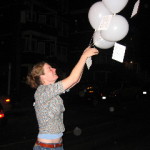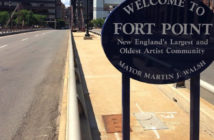The Berwick Research Institute is no stranger to change, and this past week they announced another major transition: the end of their Artist In Research (AIR) program. This announcement comes on the heels of a number of changes at the Roxbury-based organization, and the implications are not yet certain. The Berwick team, however, is already looking to the future. Bonnie Bastien, who led the AIR program from 2007, said: "The Berwick is a lot more than just the AIR program, and it was obvious that things were changing. We wanted to end strong, and have people remember AIR as a strong voice, rather than have it fade away and be forgotten."
The AIR program was first initiated in 2002, while the Berwick was still an exhibition gallery space. The first two years featured artists Jessica Rylan, Dave Webber, Amy Sharp, Christy Georg, Aliza Shapiro, John Osorio-Buck and The Devil Music Ensemble, whose work was shown in the Berwick gallery. However, in late-2003 the Berwick's exhibition venue was closed by the city, which caused the organization to radically reconsider what they could do to help artists and promote the kind of work they wanted to support.
Writing at the time, Berwick Director Meg Rotzel said: "City support doesn’t mean the sanctioning or financial aid of a specific gallery or performance space. What is needed is the basic support that allows an artist (including the performance population) to do what they do regardless of venue or public turnout. Boston is rich with production, dance, and theatre companies, as well as artist collaboratives – most of which are funded from the day jobs of individuals. As a result, those who are most prolific in the Boston art scene seem to leave after a few years looking for greener pastures."
The Berwick's response to the loss of their white cube was to invest the majority of their energy into the AIR program, and while the Berwick has created a number of programs and events within their mission, the AIR program was the most visible and constant face of the group. At its core, the program was built on a simple mission: each year, they would support 3-4 artists with a studio space, some financial backing, and ongoing peer critique and public discussion. AIR was designed to promote process and dialogue, and enhance the making of art, rather than the final display. The curators chose artworks that could exist outside of a gallery, in unexpected places, and worked with the artists to realize their ideas.
In 2007, Bonnie Bastien and Rosie Branson Gill took over the program (Branson Gill departed in 2008). Speaking at the time about the Berwick vision, Branson Gill told us: "Heather Kapplow explained it really well at our last board meeting. She said that, as opposed to having The Berwick be about a space, because there are a ton of reasons why identifying with Dudley Square is a fallacy on our part, we should make it sort of a smell. That’s how she put it. We’re going to make it a smell that permeates through Boston, and when you catch a whiff of it you know that this is Berwick."
In seven years, the AIR program hosted 28 artists. These included the Busycle, Kelly Sherman, Jesse Kaminsky, Véronique d'Entremont, Vaughn Bell, Liz Nofziger and many others. Each project was unique and challenged what art can be. The final project was by Eve Essex, who created "historical reenactment of Cornelius Cardew's Scratch Orchestra" on the Boston Common.
The Berwick is quiet on the timing of this decision, but the recent tenure (and departure) of Leon Johnson as Director -- the Berwick website refers to his time as the "Director In Research Experiment" -- seem to coincide with this change. Bonnie Bastien has also said that, with the closure of AIR, she will leave the Berwick and pursue other opportunities.
While AIR was a vital part of the Berwick, its closure does not mean the end of the organization. They continue to produce the annual Bumpkin Island Art Encampment, and create various social experiments in their Special Projects Incubator. Yet, the end of AIR signals a major change for a group that has already weathered many changes.
- Jessica Rylan, Nature Diorama from the Berwick AIR Retrospective at The Mills Gallery.
- Jon Taylor, Head Acres
- Former Berwick Director Meg Rotzel releases balloons for a project by Morgan Schwartz
All images are courtesy of the artist and The Berwick Research Institute.

